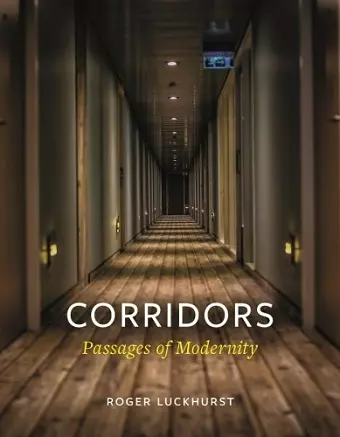Corridors
Passages of Modernity
Format:Hardback
Publisher:Reaktion Books
Published:1st Apr '19
Should be back in stock very soon

We spend our lives moving through passages, hallways, corridors and gangways, yet they do not feature in architectural histories, monographs or guidebooks. They are overlooked, undervalued and unregarded; seen as unlovely parts of a building’s infrastructure rather than ‘architecture’.
This book is the first definitive history of the corridor, from its origins in country houses and utopian communities in the seventeenth and eighteenth centuries, through reformist Victorian prisons, hospitals and asylums, to the ‘corridors of power’, bureaucratic labyrinths, and housing estates of the twentieth century.
The book takes in wide range of sources, from architectural history to fiction, film and TV, to explore how the corridor went from a utopian ideal to a place of unease: the archetypal stuff of nightmares.
One of the book's strengths is Luckhurst's appreciation that architectural spaces owe their emotional impact to context as much as to form: corridors may be sites of isolation and dread — he writes vividly about them as dystopian symbols of bureaucracy — but they can also be places for communication and encounter. * TLS *
[an] ambitious and consistently informative cultural history of the corridor. * LRB *
It is the most boring room in the house, or so you might think. Luckhurst, an academic who has previously written on horror and zombies, here considers the surprising history of what is often an architectural afterthought– and explains why so many terrible things happen in corridors in films. This is an illuminating book for readers intrigued by architecture’s forgotten history. * Financial Times list of the year's best interiors books *
Walls have ears, halls less so. In his fascinating architectural history Corridors, professor Roger Luckhurst points to Blenheim Palace as having the first identified corridor in English architecture. They were an organisational revolution, allowing longer,
grander facades, simplifying spatial organisation and opening up new and impressive internal vistas. They pierced the "cluttered manoeuvring through successive rooms", allowing rapid, direct communication and clear hierarchies. It embodied early modernity: rational, and autocratic.
Unexpectedly, Roger Luckhurst is an academic who specialises in horror literature and film studies . . . Luckhurst suggests that the prevalence of corridors in the works cited represents a move from the "vertical" concerns of gothic literature (attics, dungeons and so forth) to a more consciously "horizontal" mode. * The World of Interiors *
The narrative of the book is graceful, and the selection of examples correct, ranging from Fourier’s phalanstery to today’s bureaucratic passageways and horror attractions, with hotel corridors and the galleries of aristocratic mansions included in between. * Arquitectura Viva *
Corridors: Passages of Modernity demonstrates that the, often overlooked, corridor, uncelebrated by architectural history, was in fact a social, political, economic as well as aesthetic matter which should encourage us to look at our current infrastructure with equal discernment. * Sherry McKay, Buildings & Cities Journal *
One of the great writers on Horror and Pulp trains his attention onto the history of modern architecture, reading it through one motif - the passageway and corridor, revealing the simple conduit as something alternately punitive and utopian, idealistic and functional. The results serve as a pathway through the mundane reality and extraordinary potential of the cities we live in. Your local mall will never feel the same again. -- Owen Hatherley, author of Militant Modernism, The Chaplin Machine: Slapstick, Fordism and the Communist Avant-Garde, and The Ministry of Nostalgia
What a work of imaginative re-engineering! Roger Luckhurst - always learned, but always witty too - journeys through architecture, philosophy, social thought and radical history to show that corridors, as much as they have been associated with dread and numbing conformity, have also been sites of utopian dreaming, celebrated as engines of collectivity and social exchange, heralded as pathways to marvellous modernity. -- Sukhdev Sandhu, Associate Professor of English Literature, New York University, and author of Night Haunts: A Journey Through The London Night (2007)
ISBN: 9781789140538
Dimensions: unknown
Weight: unknown
336 pages